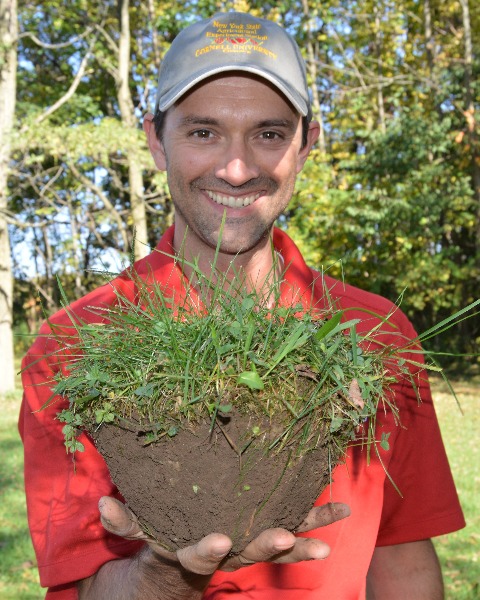Member Symposium
Insects in Soils: Peering into the Black Box
7: Microarthropods impact soil biological activity and plant growth under different fertilizer amendments
On-Demand

Ashley Jernigan
Cornell University
Ithaca, New York
Kyle Wickings
Cornell University
Geneva, New York
Presenting Author(s)
Co-Author(s)
Soil microarthropods (Collembola and mites) have been shown to accelerate rates of decomposition and promote nutrient mineralization through interactions with soil microbes. To explore this process, we conducted a greenhouse study to determine how microarthropods interact with different organic fertilizer amendments to influence soil microbial activity and crop growth. Oats were sown into pots containing all combinations of three microarthropod community abundances (none, low, high) and four fertilizer treatments (none, poultry litter compost, alfalfa green manure, Chilean nitrate). Each week oat growth stages, plant height, and plant health observations were recorded. Pots were harvested at two growth stages, boot (forage) and soft dough (grain), during which oat biomass, microbial biomass, microbial enzyme activities, and microarthropod abundances were measured. The average oat growth stage and height of the tallest plant in each pot was affected by fertilizer treatment every week, excluding the growth stage at week two. At both harvests shoot biomass was greater and root biomass was reduced when the fertilizer source was more plant available. Additionally, seed production increased in the more plant available fertilizer treatments. Microbial biomass was affected by both the microarthropod and fertilizer treatments in differing ways at each harvest. Microbial enzymes were predominately affected by treatment interactions, suggesting that fertilizer choice impacts the relationship between microarthropods and microbes. The chitin cycling enzyme (NAG) was correlated with oat shoot, root, and seed biomass. Our findings indicate microarthropods indirectly impact plant growth by modifying interactions between fertilizers and soil microbial activity.

